Replacing an Electrical Panel: What Are the Costs in 2025?
By Editorial Team
Updated on July 24, 2025

An electrical installation won’t last a lifetime, and some of its operative components will eventually need to be replaced. There are several reasons behind a home renovation project: to improve aesthetics, enhance comfort, or increase energy efficiency.
Deciding to undertake electrical system repairs can also be deemed a necessity to comply with current safety standards.
Based on the state of your home, as well as its square footage, repairing your electrical installation comes with a cost, and it’s the reason why it’s imperative to compare prices to ensure the best value for money. In most cases, calculating the cost of an electrical repair also implies determining the costs of labour associated with the electrical component pricing.
How much does it cost for residential electrical repairs? What’s an electrician’s hourly rate? These are all questions we’ll elaborate further on in this article.
How much does it cost to replace or upgrade a home's electrical panel?
Type of Electrical Renovation | Price |
|---|---|
100A electrical system renovation (panel already up to code) | $700 - $1,600 |
100A electrical system renovation (panel not up to code) | $1,000 - $1,500 |
200A electrical system renovation | $1,500 - $2,000 |
Installation of an auxiliary electrical panel | $250 - $800 |
Install a new electrical panel | $650 - $1,500 |
Installation of a 120V electrical circuit | $300 - $700 |
Installation of a 240V electrical circuit | $350 - $700 |
Add a standard electrical outlet (existing circuit) | $200 - $300 |
Add a standard electrical outlet (new circuit) | $250 - $350 |
Partial or complete rewiring | $5000 + |
System grounding | $100 - $500 |
Electrical plan for new construction or major renovation | $300 - $2,000 |
Warning signs that your electric panel needs to be changed:
Over-loaded or obsolete fuse box;
Upcoming repairs involving a specific type of panel that can’t be updated to comply with the new 2018 code.
However, our consulted expert, Cyrille Chatelain, Création et Design Électrique, says that “an old electrical panel or one that’s deemed obsolete isn’t necessarily a risk in itself; it all depends on the type of usage, but most importantly the repairs done.” During the course of our interview, he also reminded us that the cost of installing a new electrical panel or a sub-panel depends on several factors, such as amperage, distance, and equipment type.
Before signing a contract for electrical repairs, request a quote to take a look at the costs of the invoiced repairs. The invoice must reflect all repairs planned, be accurately detailed, and include costs. The quote must also contain a detailed material description as well as the tools used (brand, power, etc.).
Modernization of the Electrical System
Cost of Updating a 100-Amp (100 A) Electrical System
Updating your electrical system is often mandatory on account of changing requirements. These standards, which get increasingly strict year after year, are put in place to increase electrical system safety and promote general access to electricity for everyone. To update your 100-amp electrical system, note that costs run between $700 and $1,600.
Should you also need to replace your panel, budget $1,500 at most for your repairs. According to Chatelain, Création et Design Électrique, “replacing a [100 A] panel with an updated version costs between $1,000 and $1,500. The replacement takes 8 hours, with a 4-hour power outage.”
Cost of Updating a 200-Amp (200 A) Electrical System
Nowadays, our energy and electricity consumption is increasingly significant. A large number of homes located in the Montréal area have an average of 47-amp and 8,200-watt electrical system capacity, which was compliant with 1960s standards. Since electrical systems featuring such mediocre power are now insufficient to meet our growing need for electricity, you have to update your household with a new 200-amp system.
Our expert went on to explain, “Replacing a [200-A] panel with a more recent model costs between $1,500 and $2,000. The replacement, which will take 8 hours, will include a 4-hour power outage.” As such, you’re no longer overloading your electrical circuit, which means reducing the risks of fires.
The price of Installing a Sub-Panel or New Breaker Box
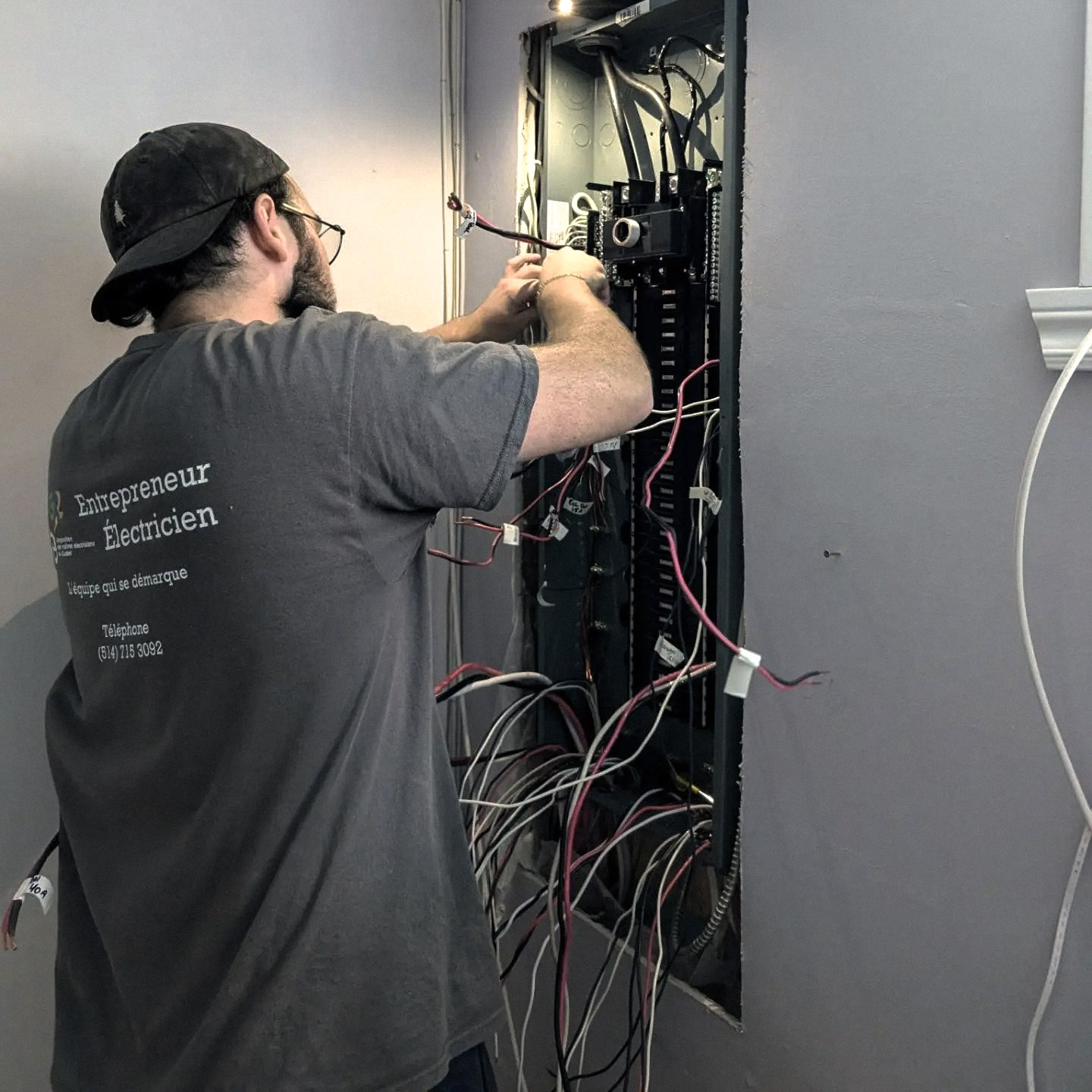
Source : electricite GRZ inc.
Installing an auxiliary electrical panel (or sub-panel) can prevent overheating your installations by splitting your points of origin. Changing a main electrical panel can be carried out on account of numerous reasons, most notably to comply with new standards and increase amperage capacity.
Budget between $250 and $800 to install a sub-panel. When it comes to hiring an expert to put in place a new electrical panel, budget between $650 and $1,500.
Cost of Adding a 120V or 240V Circuit
In a household, every room has its set of features. If you’re reorganizing your home's layout, you’ll also need to inspect your electrical connections. Note that not every room consumes the same amount of power.
According to Chatelain, to add a 120-volt or 240-volt circuit, pricing depends on amperage, distance, and the type of equipment added. To install a 120-volt electrical circuit in a room with a microwave and refrigerator, you’ll need to spend between $300 and $700. Installing a 240-volt circuit is typically recommended in areas requiring more power, like a laundry room for example. Plan for a budget between $350 and $700 to carry out such work.
Work Involving an Electrical Outlet
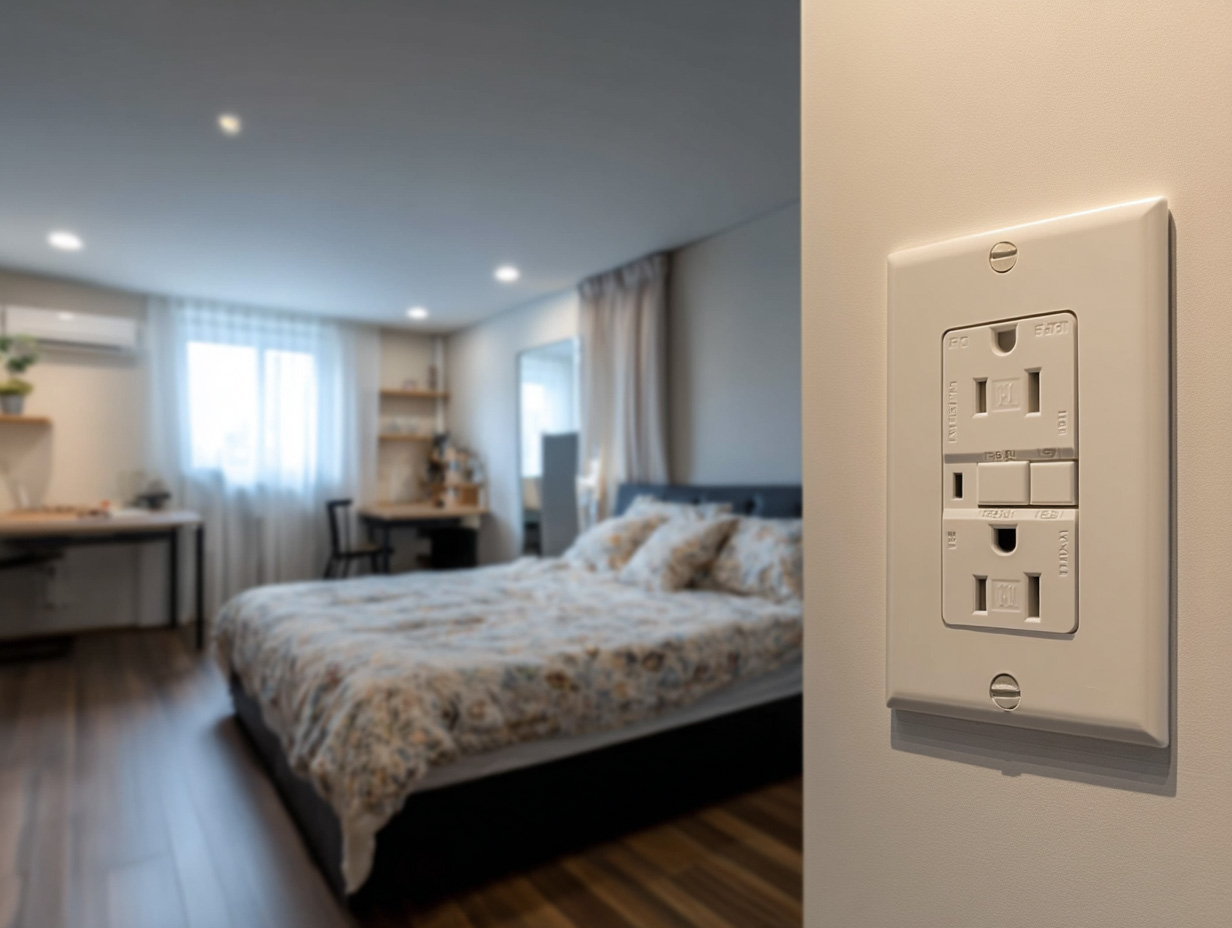
Source : RenoQuotes
Even if work involving electrical outlets isn’t as significant, keep in mind that you can, under no circumstances, carry them out yourselves. For example, work involving an electrical outlet absolutely requires adding a new 15-amp or 20-amp arc fault circuit breaker.
Here’s a rundown of expected costs:
Adding electrical outlet: between $200 and $350;
Adding a split kitchen outlet: between $200 and $400;
Grounding a standard outlet: between $100 and $500;
Replacing a standard outlet with a compatible aluminum wiring outlet: $20 to $40 per unit.
How much does it cost to rewire a household after large-scale renovations?
If your household underwent significant changes following large-scale renovations, such as a home addition, rewiring a house is mandatory to ensure all areas are serviced. To rewire an entire dwelling, budget at least $5,000.
All tasks related to electrical work must be carried out within the appropriate safety measures. Moreover, in some regions in Canada, as it is in Quebec, only certified electricians can perform such tasks. Make sure to inquire before DIYing your repairs.
For more information regarding electrical repairs, here are two related articles: How to Change an Electrical Panel and How to Tell It’s Time to Renovate Your Electrical Panel.
An Electrician's Hourly Rate for Household Repairs
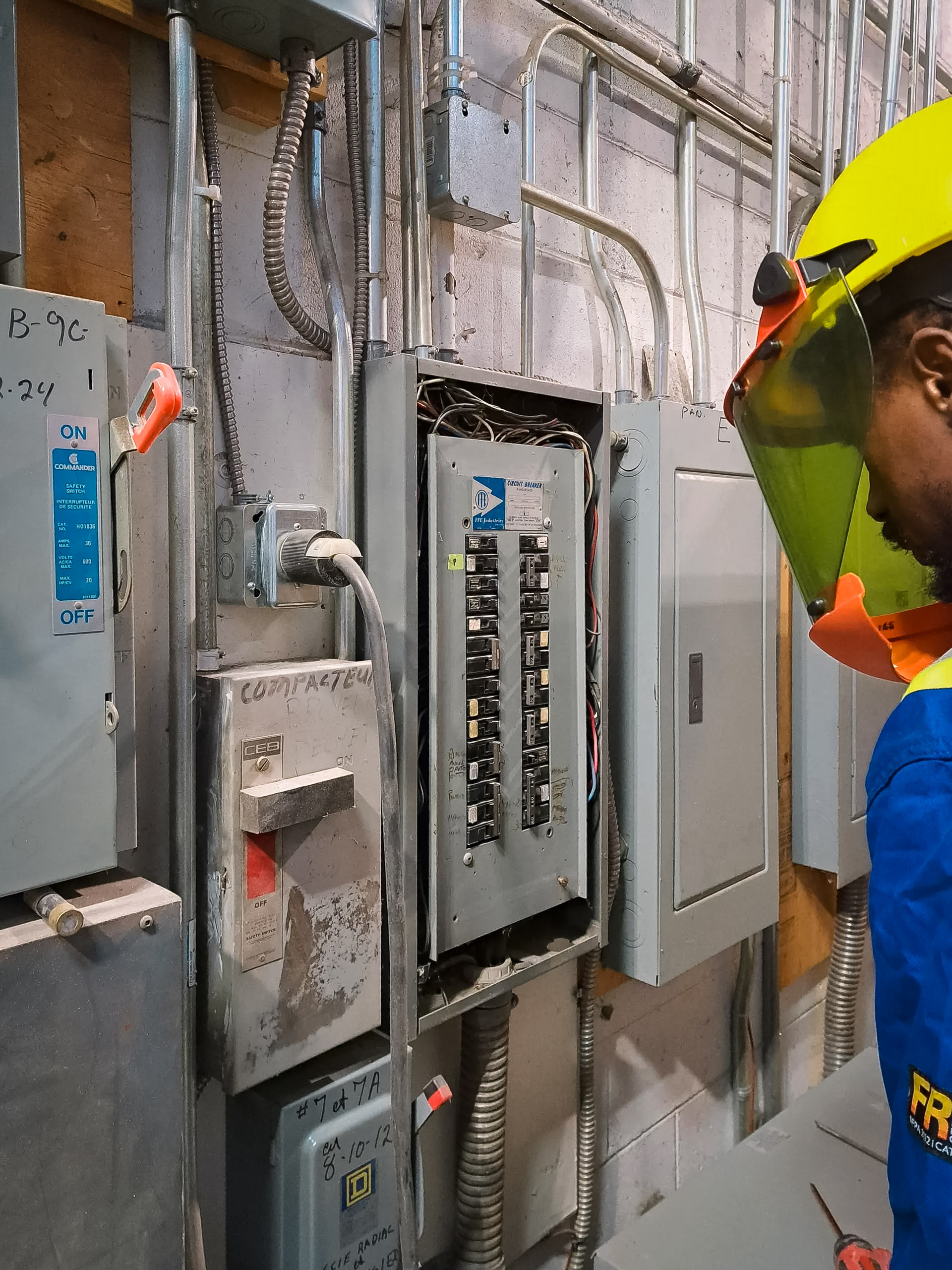
Source : BCD Électrique
The Building Code (Section 49) stipulates that for any electrical work, it is essential to entrust these tasks to a master electrician. This is a mandatory step, whether for large-scale projects or for simpler ones, such as installing an electrical outlet. Note that you risk a fine between $1,000 and $6,000 if you undertake electrical renovation projects yourself.
Nowadays, 25% of house fires are caused by faulty electrical wiring. Neglecting to hire an electrician is often synonymous with non-compliant repairs, which can have disastrous consequences, such as igniting a fire inside the residential property. In similar circumstances, your home insurance provider might decline your insurance claim.
In Quebec
The CMEQ (Corporation des maîtres électriciens du Québec—Electrical Safety Authority in Ontario) established a list of hourly rates recommended by construction electricians, such pricing was divided into the 5 following categories:
Light residential sector: $112,58 - $143,30$/h.
Heavy residential sector: $118,88 - $185,08/h.
Institutional, commercial, and industrial: $134,32 - $213,86/h.
Heavy industrial sector: $141,46 - $219,59/h.
Civil engineering and roadworks sector: $127,06 - $199,56/h.
In Ontario
In Ontario, the costs for specific electrical jobs will likely come down to the contractor as well as the job itself. Under the Consumer Protection Act (CPA), homeowners like yourself are protected from paying overestimated prices. For all electrical work, there should always be a written contract in play. Average costs can range anywhere from $40/hr to carry out a simple light fixture change to $7,000 for large-scale repairs, such as moving electrical work or replacing knob or tube wiring.
In Nova Scotia
In Nova Scotia, the UARB (Utility and Review Board) is responsible for labour costs as they relate to electrical work. The hourly rate for jobs can range anywhere between $25 to $70, so be sure to determine the costs upfront before having your contractor carry out any work.
In Alberta
In Alberta, electrical work is on a case-by-case basis. However, all electricians who work in the province must be registered as apprentices and are still considered apprentices during their first 4 years on the job.
Regardless of the province you’re living in, be certain that you’re working with a qualified professional who is registered and ready to take on the job.
Want to keep reading and learn about common household electrical problems? Check out our article The 9 Most Common Electrical Problems.
Invest in Safety with a New Electrical Panel
Replacing an electrical panel in 2025 is an essential investment to ensure the safety and compliance of your installation. Remember that hiring a certified electrician is mandatory to ensure the work is up to standard and durable, minimizing the risks associated with power outages or electrical overloads.
FAQ: Replacing an Electrical Panel
What factors influence the cost of replacing an electrical panel?
The cost of replacing an electrical panel can vary significantly based on several factors, such as:
Age of the panel
Ampacity
Number of circuits
Installation complexity
Type of panel
Geographic location
Do I need to replace my entire electrical panel or just part of it?
The decision to replace your entire electrical panel or just a part depends on several factors. If your panel is very old, damaged, or no longer meets electrical standards, a complete replacement is often recommended for safety reasons. A full replacement may also be the best option if your circuit breakers frequently trip or if you experience electrical overloads.
How long does it typically take to replace an electrical panel?
The duration of an electrical panel replacement varies based on the installation's complexity. Generally, it can take anywhere from half a day to several days.
How do I know if my electrical panel needs to be changed or updated?
Here are a few signs that indicate your electrical panel may need to be replaced:
Circuit breakers frequently trip
Excessive panel heating
Age of the panel
Unusual noise
Flickering lights
Burning smells
For more details, check out our article "5 Signs It's Time to Replace Your Electrical Panel."
What are the benefits of replacing an old electrical panel?
Replacing an old electrical panel offers numerous advantages, including:
Improved safety
Increased property value
Better energy efficiency
Greater capacity
Can you replace or upgrade an electrical panel yourself?
The short answer is no—unless you are a trained and certified electrician.
What does replacing an electrical panel entail?
Replacing an electrical panel is a complex process that involves several critical steps to ensure safety and compliance with local regulations. Here's an overview of what the replacement entails:
Preparation: Obtain permits, disconnect power, and follow safety protocols.
Removal: Label and disconnect circuits before removing the old panel.
Installation: Mount the new panel, install breakers, and reconnect circuits.
Grounding: Ensure proper grounding and bonding.
Inspection: Test the panel and pass a code compliance inspection.
Restore Power: Reconnect with the utility company after approval.
This complex process requires a licensed electrician for safety and code compliance.
How hard is it to replace an electrical panel?
Replacing an electrical panel is not only a complex task, but a potentially dangerous one that requires technical expertise. It involves working with high-voltage electricity, obtaining permits, following local electrical codes, and ensuring proper grounding and wiring connections. Mistakes can lead to fire hazards, electrical shock, or equipment damage.
Because of these risks, the work is best left to a licensed electrician who has the training and certification to perform the job safely and correctly.
Looking for something else?
Related articles
The latest industry news, interviews, technologies, and resources.

Editorial Team
•31 Mar 2025
Curious if concrete floors can be painted or coloured, or if they're compatible with an underfloor heating system? Wondering if a DIY concrete floor installation is achievable or best left with the pros? And, what type of contractor should you hire for the job? This article covers all these questions and more, offering valuable insights to help you decide whether concrete flooring is the right option for your home or business.
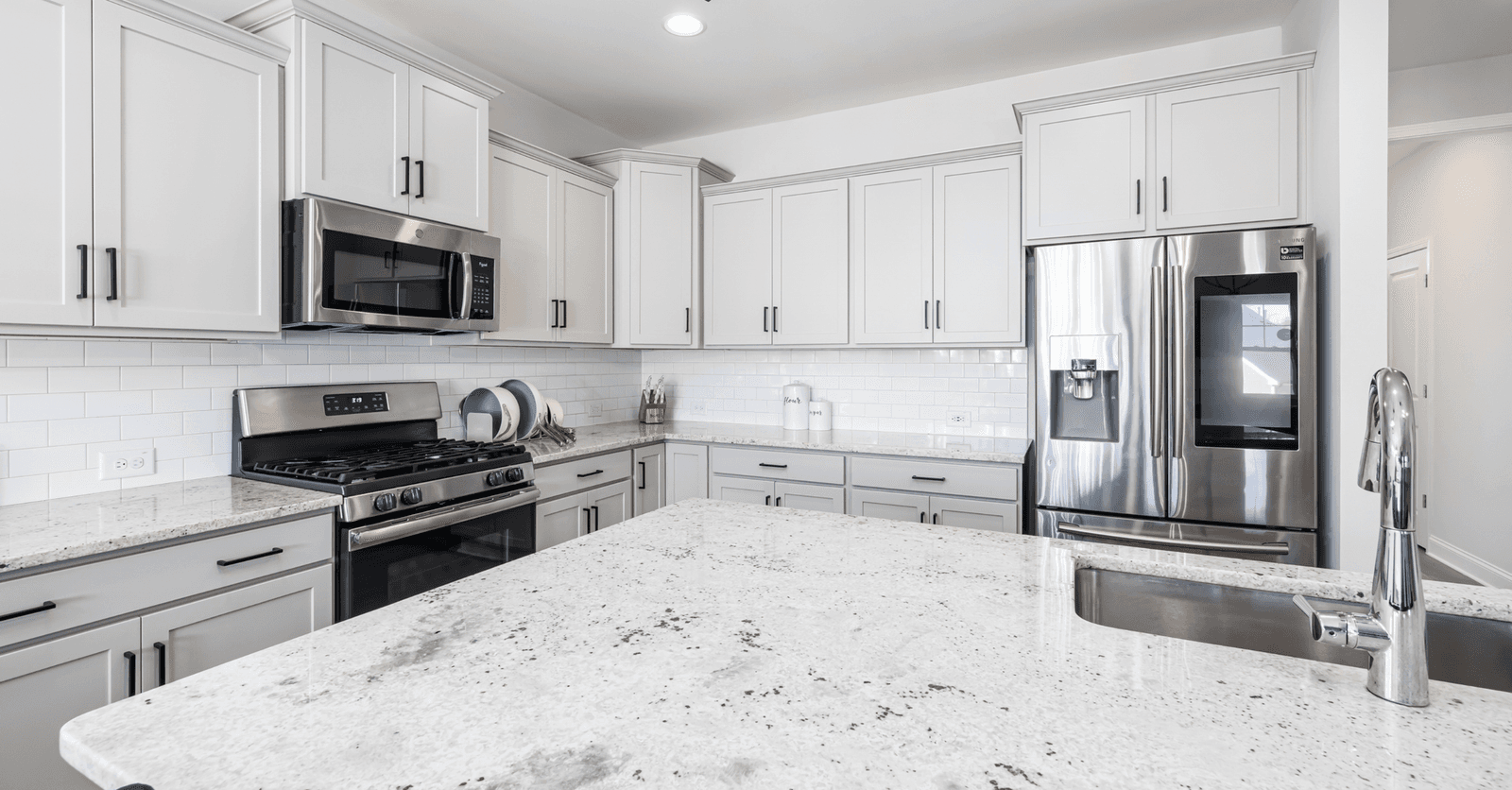
Editorial Team
•25 Sep 2024
Looking to change your kitchen countertop but think you can’t afford it? A countertop is a work surface that needs to be both practical and aesthetically pleasing. It is also one of the elements that can be very expensive when renovating a kitchen.

Léa Plourde-Archer
•07 Nov 2023
Installing a hardwood floor can have a huge impact on your house: it can transform a room and increase the value of the building. Timeless and durable, hardwood floors are also popular because they are known for their warmth and beauty.
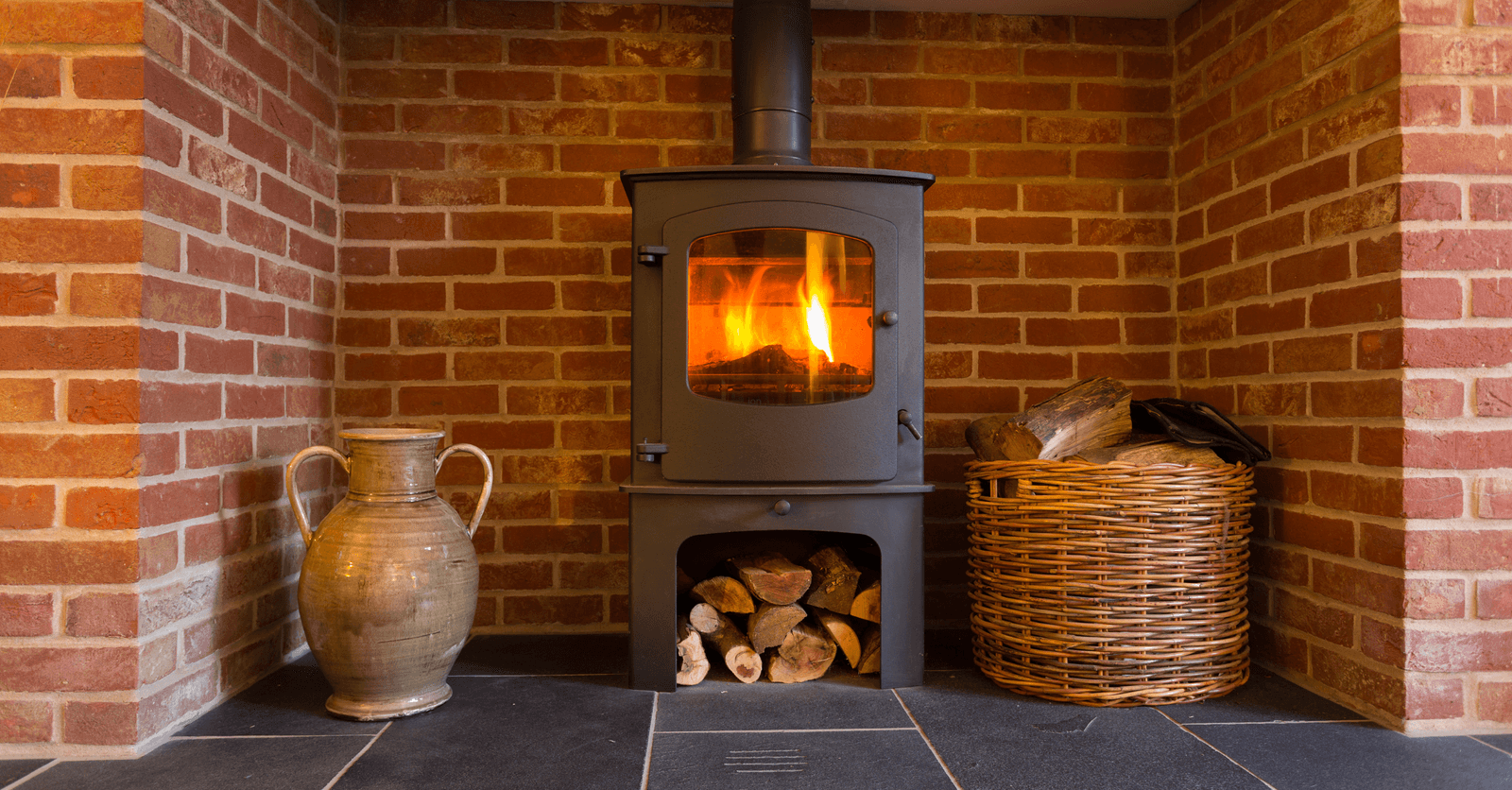
Editorial Team
•20 Sep 2024
Autonomous heating is defined as a system that relies on available, renewable and locally-sourced energies. It also has the peculiarity of not being connected to electrical, gas, or water networks.

Editorial Team
•07 Nov 2023
A renovation project without delays is like thunder without lightning; when one occurs, the other follows. Yes, the truth of the matter is that almost every single renovation project will experience a small or large bump in the road.